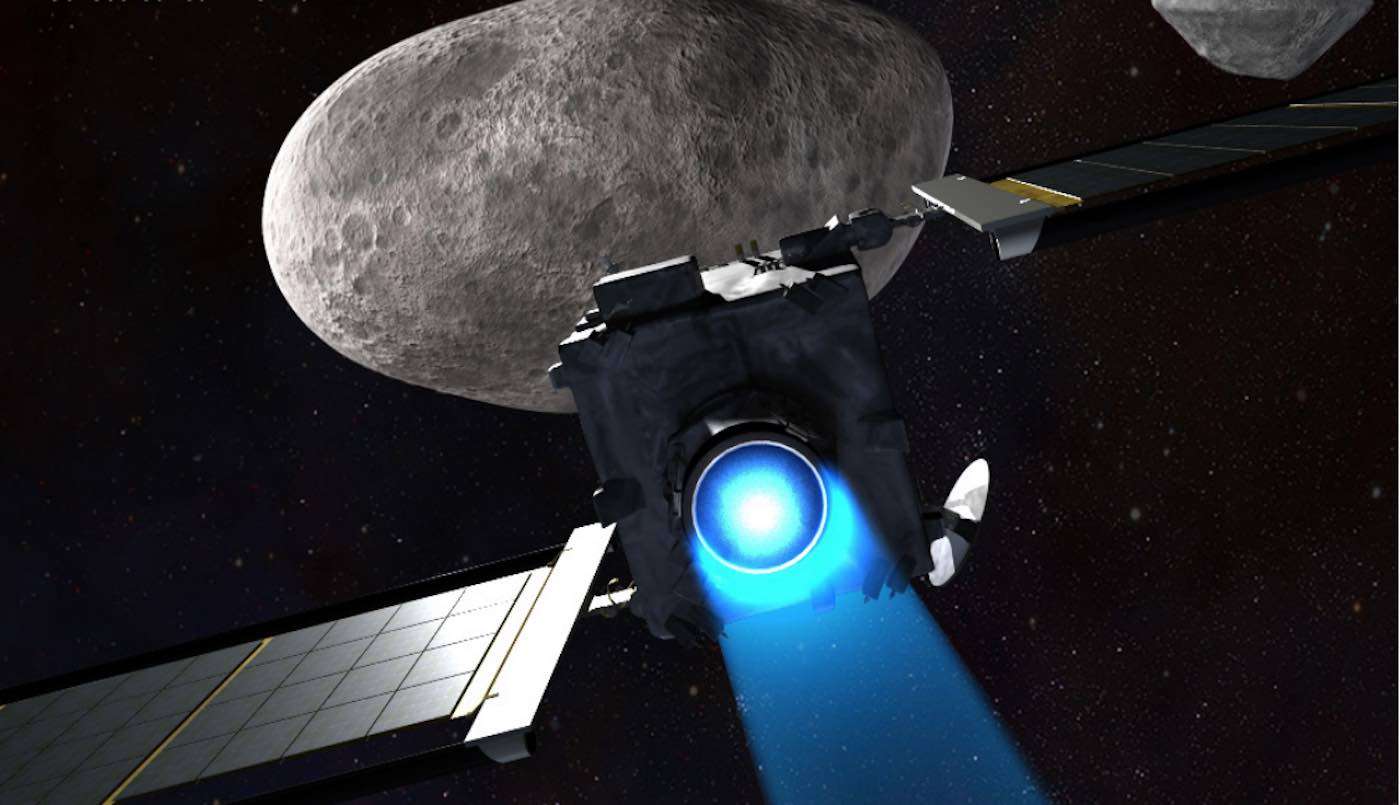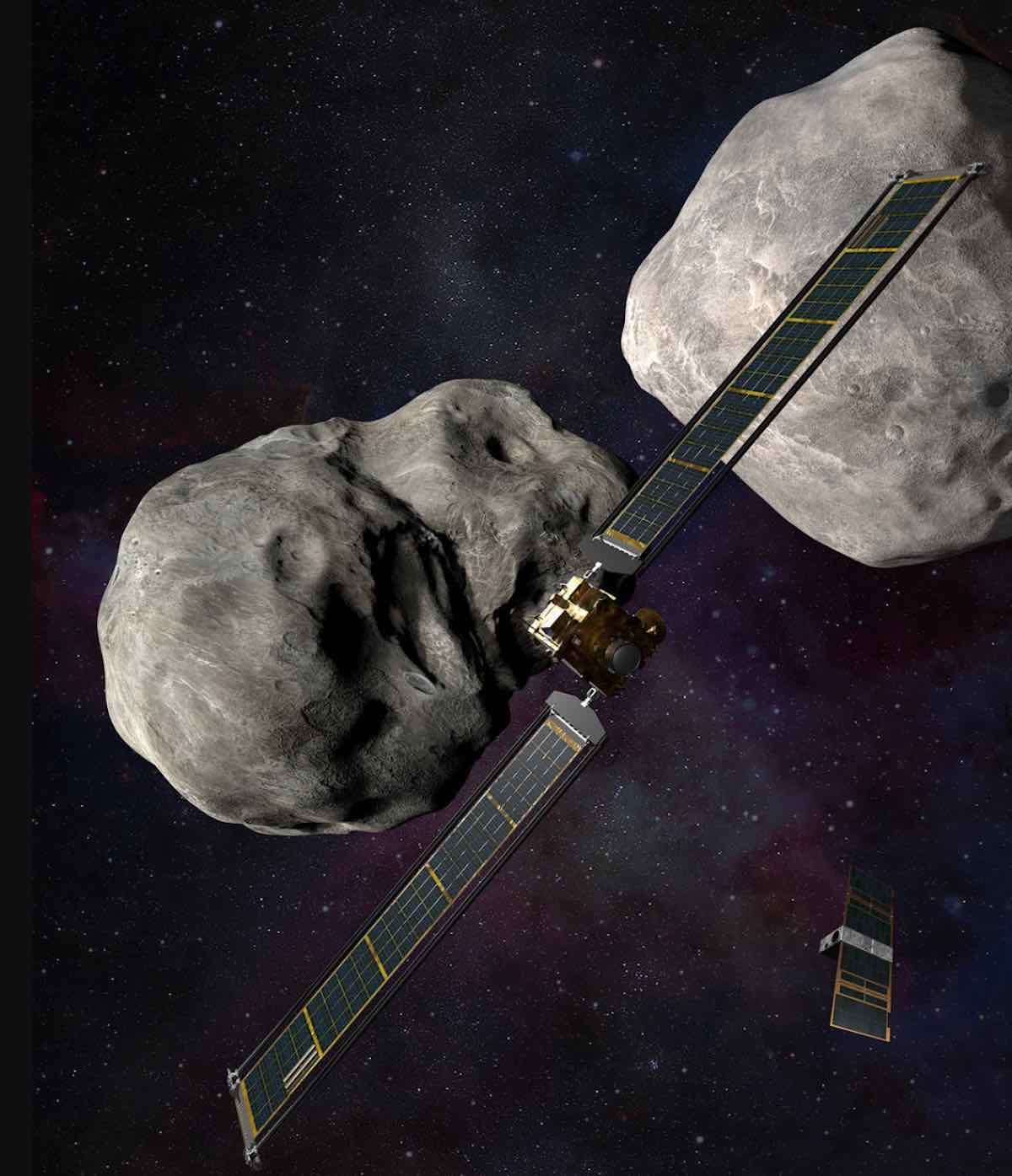Royal Air Force Lifts Off With Guinness World Record for First Flight Using 100% Synthetic Fuel
The RAF and Zero-Petroleum have received a Guinness World Record for the First zero-emissions flight powered by a synthetic jet fuel.

NASA's Double Asteroid Redirection Test (DART), the world's first full-scale mission to test technology for defending Earth against potential asteroid or comet hazards, launched Wednesday on a SpaceX Falcon 9 rocket from the Vandenberg Space Base in California.
Just one part of NASA's larger planetary defense strategy, DART – built and managed by the Johns Hopkins Applied Physics Laboratory in Maryland – will impact a known asteroid that is not a threat to Earth. Its goal is to slightly change the asteroid's motion in a way that can be accurately measured using ground-based telescopes.
DART will show that a spacecraft can autonomously navigate to a target asteroid and intentionally collide with it – a method of deflection called kinetic impact. The test will provide important data to help better prepare for an asteroid that might pose an impact hazard to Earth, should one ever be discovered. LICIACube, a CubeSat riding along with DART and provided by the Italian Space Agency (ASI), will be released prior to DART's impact to capture images of the impact and the resulting cloud of ejected matter.
"It is an indescribable feeling to see something you've been involved with since the ‘words on paper' stage become real and launched into space," said Andy Cheng, one of the DART investigation leads at Johns Hopkins APL and the individual who came up with the idea of DART. "The teams have much work to do over the next year preparing for the main event ─ DART's kinetic impact on Dimorphos. But tonight we celebrate!"
The spacecraft completed the successful unfurling of its two, 28-foot-long, roll-out solar arrays. They will power both the spacecraft and NASA's Evolutionary Xenon Thruster – Commercial ion engine, one of several technologies being tested on DART for future application on space missions.
DART is making a one-way trip to the Didymos asteroid system, which comprises a pair of asteroids. DART's target is the moonlet, Dimorphos, which is approximately 530 feet (160 meters) in diameter. The moonlet orbits Didymos, which has a diameter of 2,560 feet (780 meters).

Since Dimorphos orbits Didymos at much a slower relative speed than the pair orbits the Sun, the result of DART's kinetic impact within the binary system can be measured much more easily than a change in the orbit of a single asteroid around the Sun.
The spacecraft will intercept the Didymos system between Sept. 26 and Oct. 1, 2022, intentionally slamming into Dimorphos at roughly 4 miles per second (6 kilometers per second). Scientists estimate the kinetic impact will shorten Dimorphos' orbit around Didymos by several minutes—and researchers will precisely measure that change from telescopes on Earth.
Roughly four years after DART's impact, ESA's (European Space Agency) Hera project will conduct detailed surveys of both asteroids, with particular focus on the crater left by DART's collision and a precise determination of Dimorphos' mass.
"DART is turning science fiction into science fact and is a testament to NASA's proactivity and innovation for the benefit of all," said NASA Administrator Bill Nelson. "We're also working to protect that home, and this test will help prove out one viable way to protect our planet from a hazardous asteroid should one ever be discovered that is headed toward Earth."
No one has yet identified any significant asteroid impact threat to Earth, but the goal of the DART collaboration is to find any possible impact, years to decades in advance, so it can be deflected with a capability like DART, which is possible with the technology we currently have.
DART's single instrument, the Didymos Reconnaissance and Asteroid Camera for Optical navigation (DRACO), will turn on a week from now and provide first images from the spacecraft. DART will continue to travel just outside of Earth's orbit around the Sun for the next 10 months until Didymos and Dimorphos will be a relatively close 6.8 million miles (11 million km) from Earth.
For more information, visit the the DART mission website.
BLAST This Amazing News Over to Your Friends on Social Media…
Be the first to comment